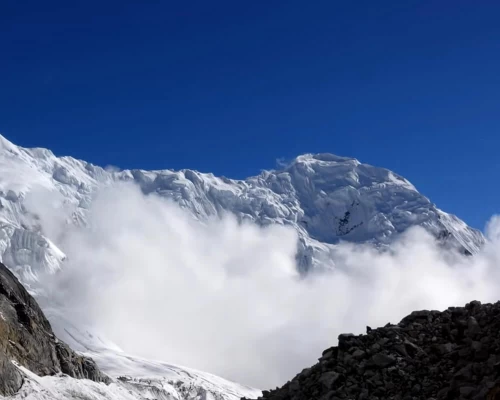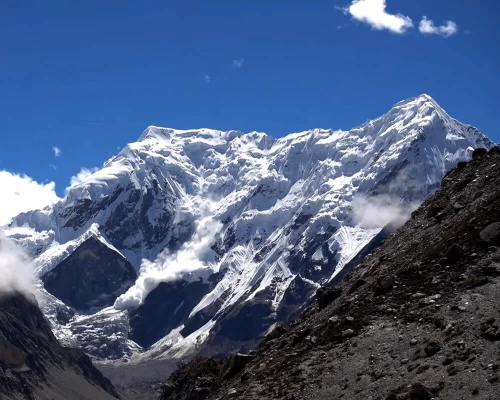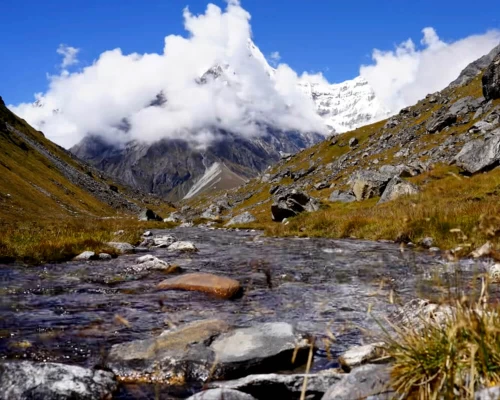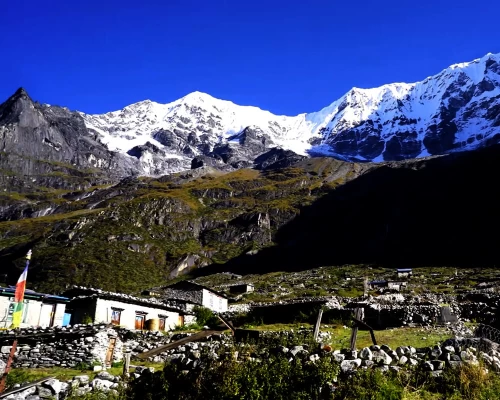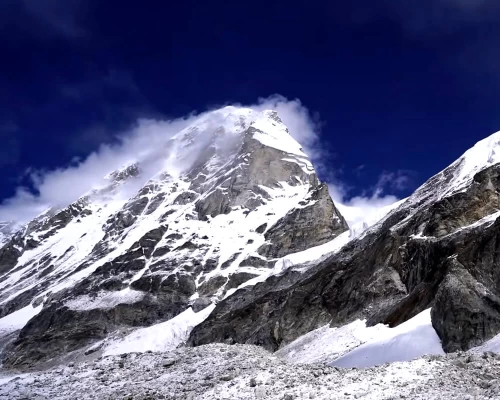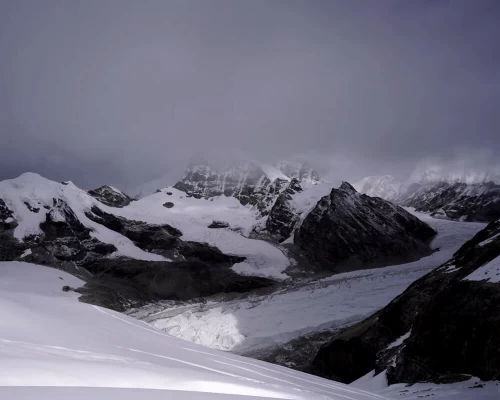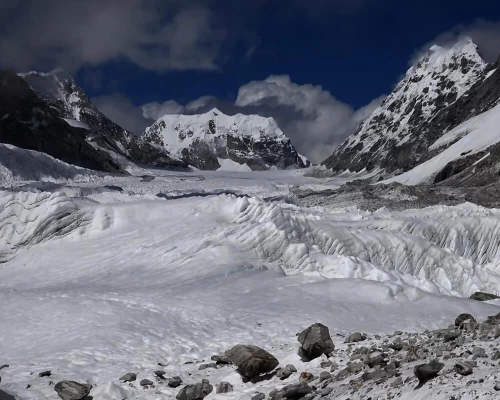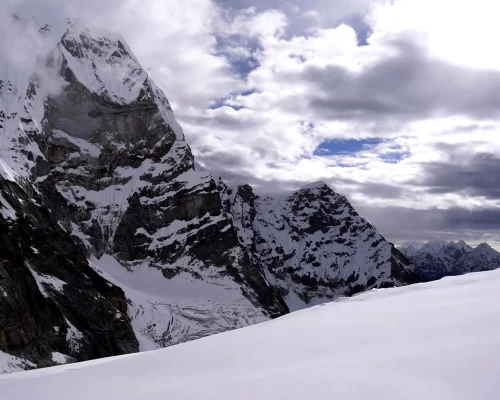Our Rolwaling Tashi Laptsa Pass Trek is an outstanding trail that takes trekkers through remote Sherpa settlements, around glacial lakes, and over high passes. On a map, this trail connects the Everest region with the nearly unheard-of Rolwaling area by way of the thrilling Tashi Laptsa Pass (5755 meters/18,881 feet). As we cross from the distant Rolwaling Himal area into the world-famous Khumbu region, dazzling mountain views lie before our eyes. Another highlight of the trek is taking a rest near one of the largest glacial lakes in Nepal, Tsho Rolpa (4580 meters /15,030 feet). Throughout the journey, though, you will be in constant amazement at the beauty that surrounds you.
During the first part of the Rolwaling Tashi Laptsa Pass trek, the trail passes over gushing rivers, some of which we cross by slippery wet rocks and wood. After ascending from Simigaon, we reach the Draplung La Pass (3976 meters), with breathtaking views of Gaurishankar (7146 meters). In Bedding, explore the old Buddhist monastery. Maybe we can get a tour if the monks are not busy! The route rises through alpine meadows and yak grazing pastures, all while being surrounded by the majesty of the Himalayas. During the Rolwaling Tashi Laptsa Trek, feast your eyes on dozens of peaks over 6000 meters, including Mount Everest, Ama Dablam, and more.
A couple of days later, we reach the majestic Tsho Rolpa lake, which could be frozen depending on how early in the season we reach there. The deep blue lake is enveloped by flanked by mountains – a truly picturesque scene. Before we know it, the time has come to cross the Tashi Laptsa Pass – one of the most difficult passes in the region. The hard work pays off as we get panoramic views of Everest region peaks as well as Langtang region peaks.
The Tashi Laptsa Pass Trekking trail makes its descent into the Everest region. Arrive in the tranquil Thame River valley and slowly hike through Sherpa settlements. We have a stop in Namche Bazaar, a big shopping and trading hub of the area, before ultimately winding up in Lukla for the flight back.
Our Rolwaling Tashi Laptsa Pass Trek is a combination of a teahouse and a camping journey. Where there are guesthouses or homestays, we can stay there upon your request. Otherwise, we will be camping outside under a tent. Release your attachments to your normal, everyday life and ‘lose yourself’ in the mountains. That's why the cost of the trek has been decreased a bit. Our detailed itinerary will give day-by-day information. For a couple of weeks, forget about the worries you have and live in the moment! Enjoy the views and feel the refreshing mountain breeze.

